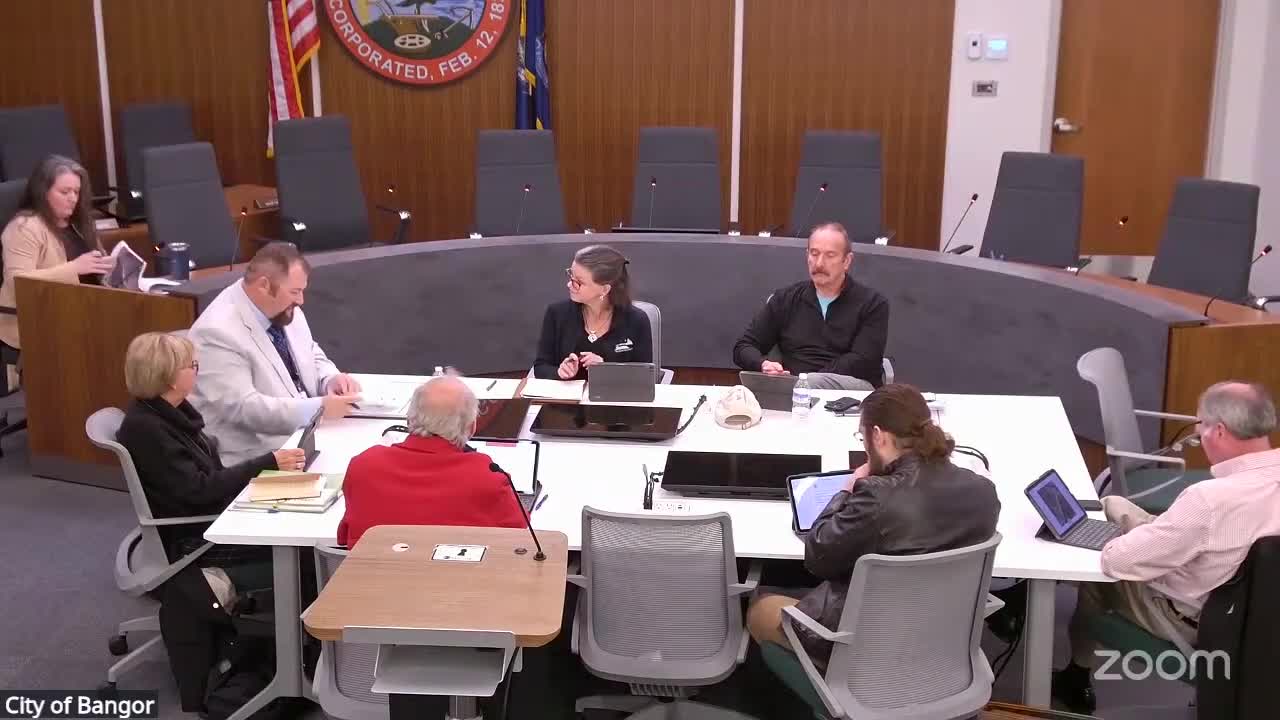Speed study shows widespread speeding on Valley Avenue; staff proposes test of speed cushions and signage
October 21, 2025 | Bangor City, Penobscot County, Maine
This article was created by AI summarizing key points discussed. AI makes mistakes, so for full details and context, please refer to the video of the full meeting. Please report any errors so we can fix them. Report an error »

City staff told the Infrastructure Committee on Oct. 20 that new traffic radar data on Valley Avenue shows vehicle speeds markedly higher than the posted 25 mph limit and recommended a multi-pronged traffic-calming trial.
The presentation reported an 80th percentile speed of 42 mph and an average speed of 36 mph on the segment where a radar unit was placed; staff said there were 6,342 enforceable violations out of nearly 10,000 vehicles recorded during the measurement period. "So the 80 fifth percentile speed is 42. The speed limit is 25," staff said.
Staff proposed testing deployable speed cushions/tables and other measures such as flashing speed signs, improved signage and targeted enforcement. The staff presentation noted prior tests on nearby streets had mixed results and described cushions designed so emergency vehicles can pass through a gap while typical passenger vehicles are slowed. Staff also cited crash history: five years of data showed several intersection crashes and two single-vehicle fatal crashes that left the road.
Committee members generally supported moving to a formal design and pricing phase. A staff representative said they had fiscal year 2026 funds available to pay for the work and would return to the committee with an actual design and pricing. The committee gave staff a verbal "thumbs up" to proceed with design and cost estimates; no formal vote was recorded.
Why it matters: higher speeds on Valley Avenue are linked to crash risk and two fatal single-vehicle incidents in the past five years, according to staff. Testing physical traffic-calming measures, combined with signage and enforcement, is intended to reduce speeds and improve safety for motorists and pedestrians.
Staff said they will evaluate spacing, design and locations for cushions, review sight-distance and pedestrian refuge criteria, and coordinate with the state Department of Transportation on intersection improvements expected during reconstruction of the Condescane (Cony?) Bridge that will reroute traffic in coming months.
The presentation reported an 80th percentile speed of 42 mph and an average speed of 36 mph on the segment where a radar unit was placed; staff said there were 6,342 enforceable violations out of nearly 10,000 vehicles recorded during the measurement period. "So the 80 fifth percentile speed is 42. The speed limit is 25," staff said.
Staff proposed testing deployable speed cushions/tables and other measures such as flashing speed signs, improved signage and targeted enforcement. The staff presentation noted prior tests on nearby streets had mixed results and described cushions designed so emergency vehicles can pass through a gap while typical passenger vehicles are slowed. Staff also cited crash history: five years of data showed several intersection crashes and two single-vehicle fatal crashes that left the road.
Committee members generally supported moving to a formal design and pricing phase. A staff representative said they had fiscal year 2026 funds available to pay for the work and would return to the committee with an actual design and pricing. The committee gave staff a verbal "thumbs up" to proceed with design and cost estimates; no formal vote was recorded.
Why it matters: higher speeds on Valley Avenue are linked to crash risk and two fatal single-vehicle incidents in the past five years, according to staff. Testing physical traffic-calming measures, combined with signage and enforcement, is intended to reduce speeds and improve safety for motorists and pedestrians.
Staff said they will evaluate spacing, design and locations for cushions, review sight-distance and pedestrian refuge criteria, and coordinate with the state Department of Transportation on intersection improvements expected during reconstruction of the Condescane (Cony?) Bridge that will reroute traffic in coming months.
View full meeting
This article is based on a recent meeting—watch the full video and explore the complete transcript for deeper insights into the discussion.
View full meeting
